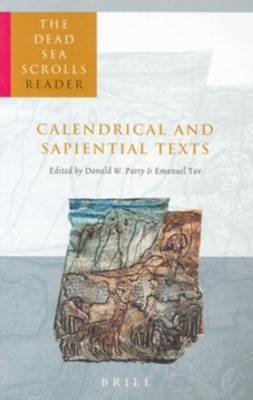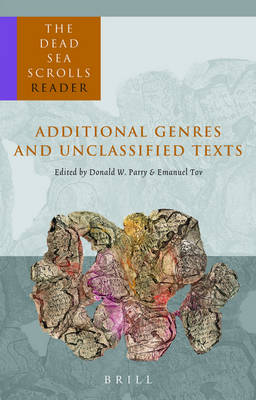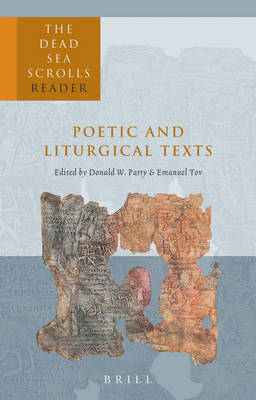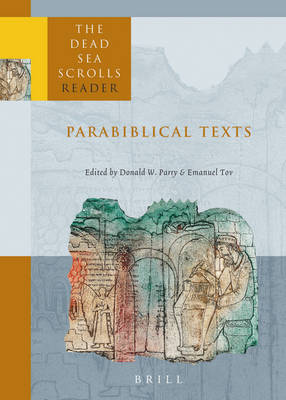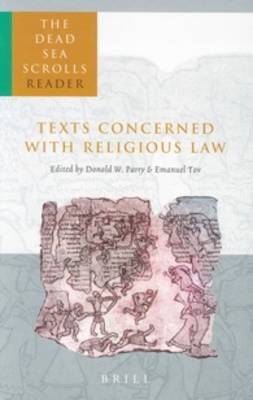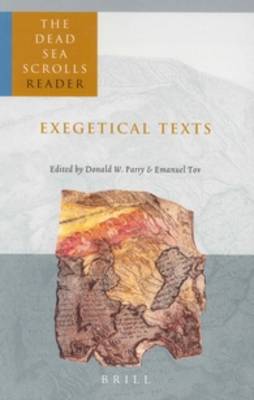The Dead Sea Scrolls Reader (6 vols)
6 total works
The Dead Sea Scrolls Reader, Volume 4 Calendrical and Sapiential Texts
by Donald Parry
Published 28 November 2003
This edition presents for the first time all the non-biblical Qumran texts classified according to their genres, together with English translations. Of these texts, some twenty were not previously published. The Hebrew-Aramaic texts in this edition are mainly based on the FARMS database of Brigham Young University, which, in its turn, reflects the text editions of the ancient scrolls (mainly DJD) with great precision, including modern diacritical signs. The Reader consists of six individual parts. The purpose of the classification is to enhance the research facilities of the individual texts within their respective genres, especially in courses at Universities and Colleges.
The Dead Sea Scrolls Reader, Volume 6 Additional Genres and Unclassified Texts
by Donald Parry
Published 10 November 2004
This edition presents for the first time all the non-biblical Qumran texts classified according to their genres, together with English translations. Of these texts, some twenty were not previously published. The Hebrew-Aramaic texts in this edition are mainly based on the FARMS database of Brigham Young University, which, in its turn, reflects the text editions of the ancient scrolls (mainly DJD) with great precision, including modern diacritical signs. The Reader consists of six individual parts. The purpose of the classification is to enhance the research facilities of the individual texts within their respective genres, especially in courses at Universities and Colleges.
The Dead Sea Scrolls Reader, Volume 5 Poetic and Liturgical Texts
by Donald Parry
Published 10 November 2004
This edition presents for the first time all the non-biblical Qumran texts classified according to their genres, together with English translations. Of these texts, some twenty were not previously published. The Hebrew-Aramaic texts in this edition are mainly based on the FARMS database of Brigham Young University, which, in its turn, reflects the text editions of the ancient scrolls (mainly DJD) with great precision, including modern diacritical signs. The Reader consists of six individual parts. The purpose of the classification is to enhance the research facilities of the individual texts within their respective genres, especially in courses at Universities and Colleges.
This edition presents for the first time all the non-biblical Qumran texts classified according to their genres, together with English translations. Of these texts, some twenty were not previously published. The Hebrew-Aramaic texts in this edition are mainly based on the FARMS database of Brigham Young University, which, in its turn, reflects the text editions of the ancient scrolls (mainly DJD) with great precision, including modern diacritical signs. The Reader consists of six individual parts. The purpose of the classification is to enhance the research facilities of the individual texts within their respective genres, especially in courses at Universities and Colleges.
The Dead Sea Scrolls Reader, Volume 1 Texts Concerned with Religious Law
by Donald Parry
Published 17 November 2003
This edition presents for the first time all the non-biblical Qumran texts classified according to their genres, together with English translations. Of these texts, some twenty were not previously published. The Hebrew-Aramaic texts in this edition are mainly based on the FARMS database of Brigham Young University, which, in its turn, reflects the text editions of the ancient scrolls (mainly DJD) with great precision, including modern diacritical signs. The Reader consists of six individual parts. The purpose of the classification is to enhance the research facilities of the individual texts within their respective genres, especially in courses at Universities and Colleges.
This edition presents for the first time all the non-biblical Qumran texts classified according to their genres, together with English translations. Of these texts, some twenty were not previously published. The Hebrew-Aramaic texts in this edition are mainly based on the FARMS database of Brigham Young University, which, in its turn, reflects the text editions of the ancient scrolls (mainly DJD) with great precision, including modern diacritical signs. The Reader consists of six individual parts. The purpose of the classification is to enhance the research facilities of the individual texts within their respective genres, especially in courses at Universities and Colleges.
